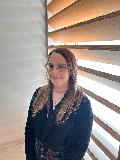Delaney Sweep is Digital Preservation Technician at the University of Calgary. She attended the iPRES 2024 Conference with support from the DPC Career Development Fund, which is funded by DPC Supporters.
The iPRES 2024 session “Preserving Works of Art” highlighted the many challenges faced when preserving both physical and digital art. In this blog, I reflect on the papers presented.
As someone who has recently entered the field of digital preservation and has a background in Museum Studies, I was thrilled that my first iPRES conference had a session focused on preserving works of art. The four papers presented during this session covered a wide range of topics, but each taught me something new about the complexities of digital preservation practices in relation to works of art that I had not considered before.
The session opened with Laura Molloy’s paper “Low-resource/No-resource: Lowering the Barriers to Sustainable Digital Preservation in the Contemporary Art Professions”, which focused on the state of digital preservation knowledge amongst professional artists living in the UK. Focusing on visual artists – not just those creating digital art – Molloy used a practitioner centered approach to survey this profession’s awareness of digital preservation practices within their workflows. The study found that artists, regardless of their artform, rely on digital technologies to not only create art but complete other tasks such as promotion. However, these professionals do not receive formal training on digital preservation tasks or concepts with existing tools not being accessible to them. This leaves their digital objects at risk of loss or damage. Ultimately, this project made me consider what gaps in formal training there may be within my own organization and how I can work with these communities to develop training, tools, and a shared vocabulary to prepare them for digital preservation activities.
The next two presentations focused more on preservation of digital works of art and associated materials, but both were successful due to collaboration. The “Opening Windows: Remote Imaging as a Preservation Tool for Legacy Computers” paper from the team working on preserving a video installation at the Kunsthaus Zürich highlighted an interdisciplinary collaboration to create disc images of two SCSI (Small Computer System Interface) hard drives installed in a Celsius Siemens 400 computer. The team explored both Ex-situ and In-situ approaches to imaging the drives, ultimately using an In-situ approach using Knoppix 7.2 and Aaru Remote. The challenges they faced when creating a disk image for this video installation showed that some solutions are only made possible when you work with others who have different but complementary skills.
Alix Bruys’ presentation on “First steps towards a BnF preservation policy for graphic works intended for printing” showcased for me the importance of talking to content creators as you accession and work to provide access to digital content. In speaking with the graphic artist and donor, Sébastien Marchel, the institution was able to come up with solutions to the challenges they faced as they went to accession his works and the associated materials outlining his process. This highlights the importance of collaboration with donors and content creators to solve digital preservation problems that satisfies the needs of all stakeholders.
Finally, Tomas Vandecasteele shared the challenges of digitizing a large panorama painting of the Congo. This project highlights both the physical issues of digitizing large works as well as how size impacts the technical process of photographing panoramas. The panorama itself was 115 metres long by 14 metres high, which made the initial challenge be where they were going to photograph the work and how they would move it there. Getting support from the military to move the work via tank to the photographing location, the team was then able to create a movable bridge to photograph the work in sections. From there, they were able to stitch it together, retouch the painting, and create an upcoming VR experience with Congolese artists who will help reframe this work using a counter narrative. The amount of teamwork and collaboration that went into a project like this was truly inspiring.
Upon the conclusion of these four presentations, I found that I kept thinking about the collaborative nature behind these case studies and their solutions. Since beginning my career in digital preservation, I find it can be easy to get immersed in the work I am doing and forget the wider digital preservation community out there. While I may never need to enlist the help of a tank to preserve a work of art, there are plenty of people, both within my organization and outside it, that I can seek out and see if they have any suggestions about the issues I am facing. Communicating and working with content creators (such as artists) directly, as well as with other members of your team or other organizations, is key when working with complex materials. By pooling our collective knowledge, skills, and expertise, we can better preserve digital objects now and in the future.
Acknowledgements
The Career Development Fund is sponsored by the DPC’s Supporters who recognize the benefit and seek to support a connected and trained digital preservation workforce. We gratefully acknowledge their financial support to this programme and ask applicants to acknowledge that support in any communications that result. At the time of writing, the Career Development Fund is supported by Arkivum, Artefactual Systems Inc., boxxe, Cerabyte, Evolved Binary, Ex Libris, Iron Mountain, Libnova, Max Communications, Preservica and Simon P Wilson. A full list of supporters is online here.













































































































































